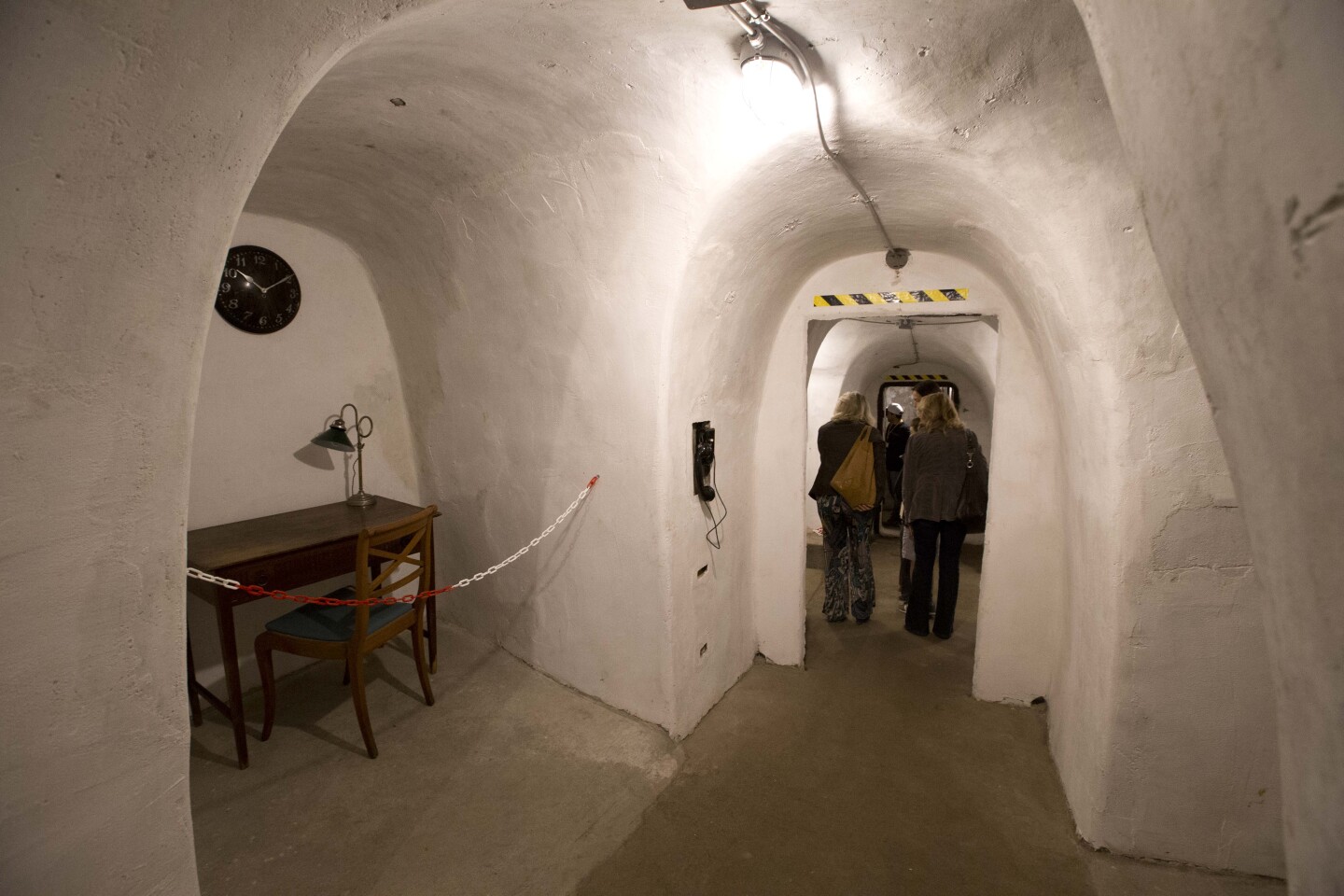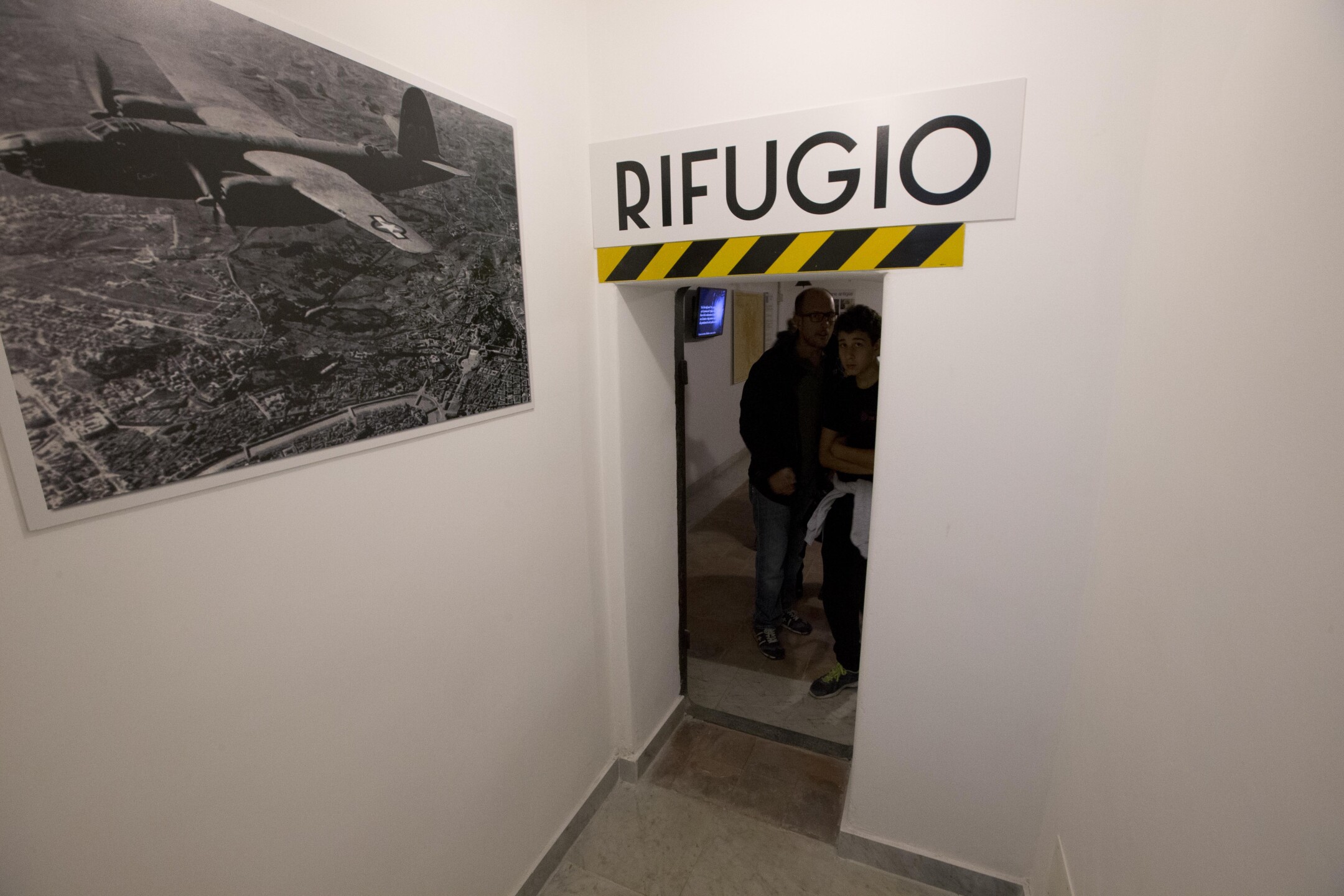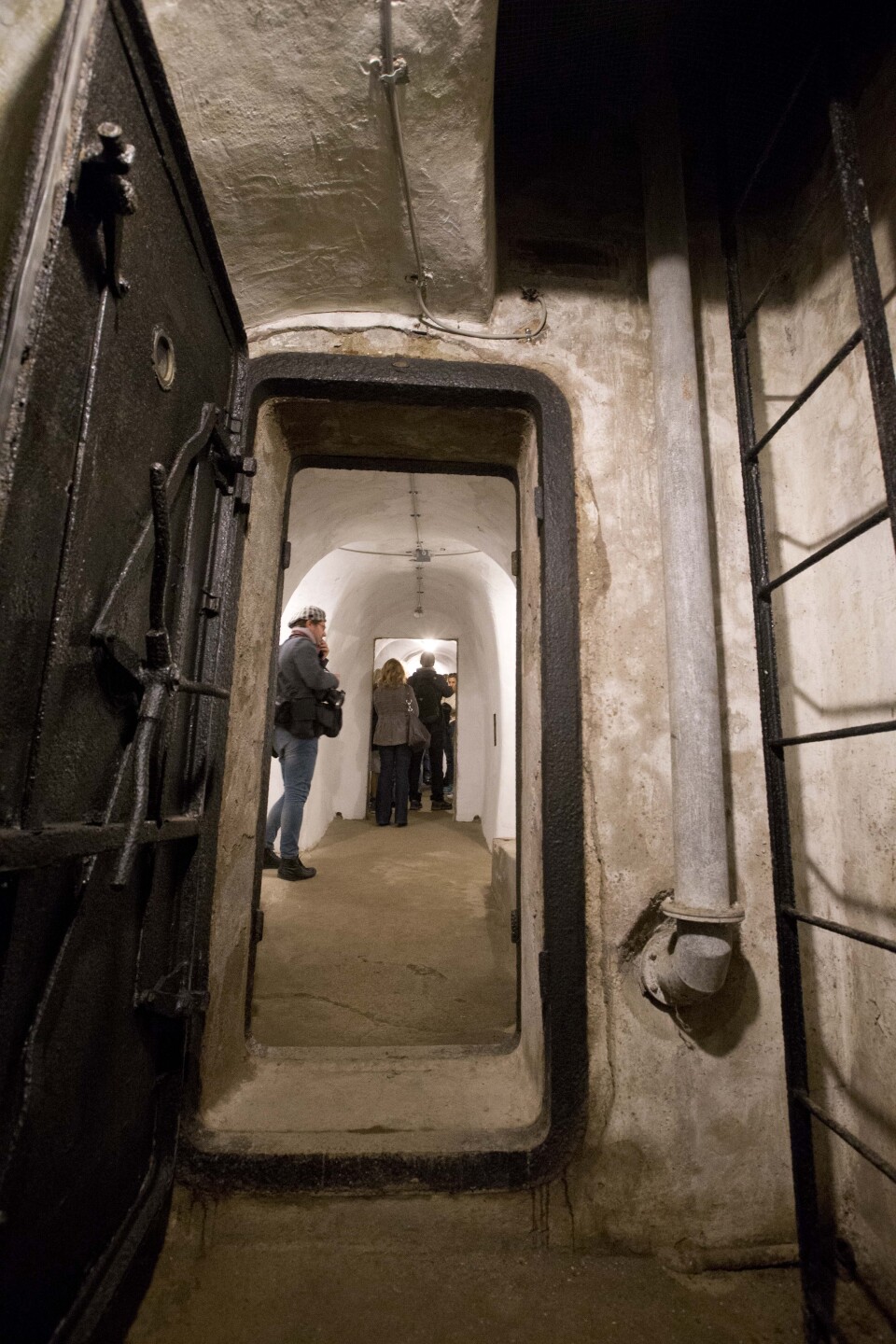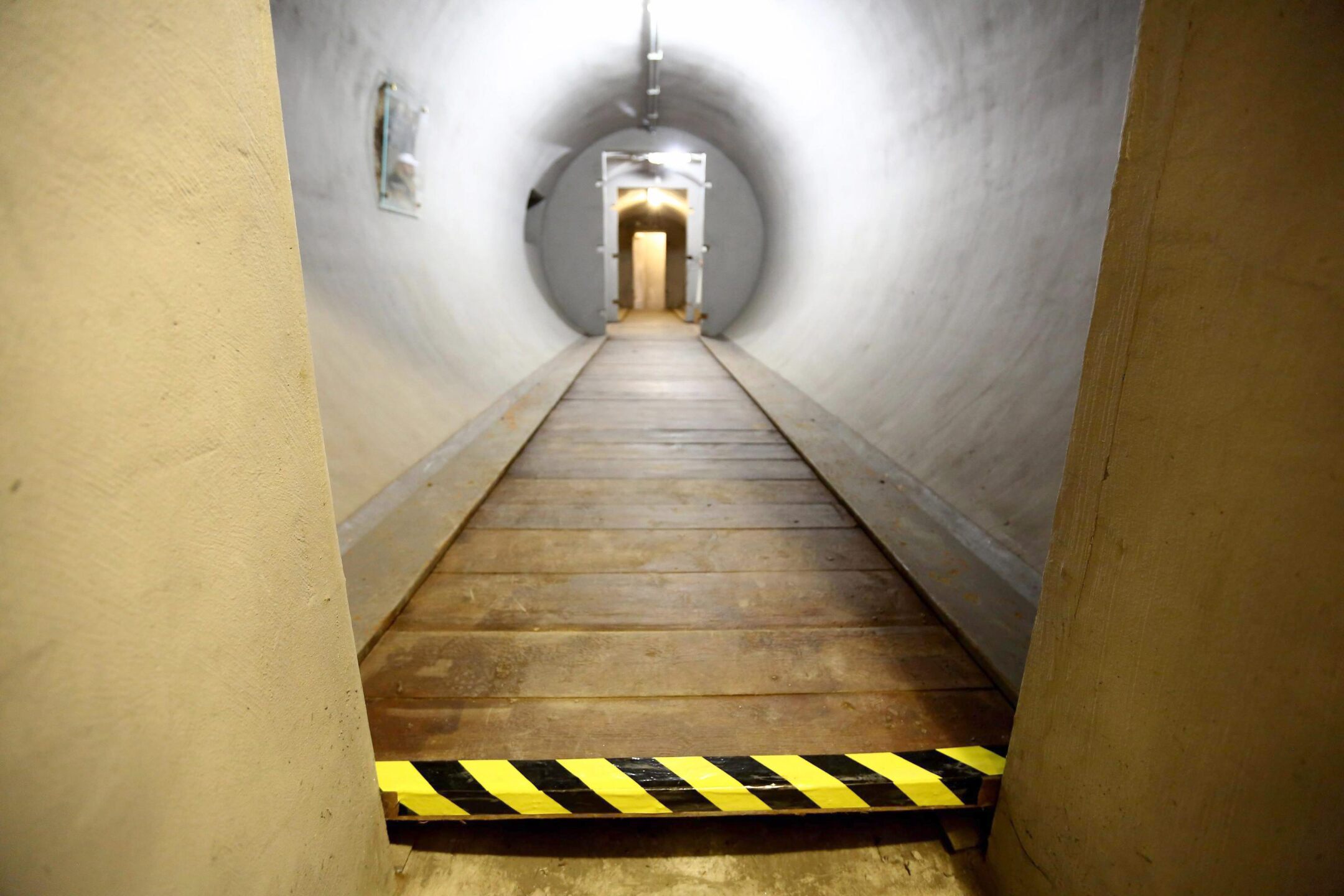Exhiben en Roma refugio antiaéreo de Benito Mussolini

Benito Mussolini’s first air raid shelter, created in old wine cellars, opened to press in Villa Torlonia in Rome, Saturday, Oct. 25, 2014. After the outbreak of World War II, the shelter was quickly constructed in 1940 in what had been the wine cellar of Torlonia noble family, who lived there before Mussolini took up residence during his Fascist rule. The city of Rome now owns the villa and opened the shelter to tourists with reservations starting from Oct. 31. (AP Photo/Andrew Medichini)
/Andrew Medichini/AP
Fue construido tras el estallido de la Segunda Guerra Mundial, en lo que fue una bodega de vino

Una bodega de vinos subterránea en Roma, que fue convertida en refugio antiaéreo para Benito Mussolini y la familia del dictador italiano, abrió sus puertas dobles de acero a los turistas.
El refugio fue construido rápidamente en 1940, tras el estallido de la Segunda Guerra Mundial, en lo que fue la bodega de vino de una familia noble que vivió ahí antes de que Mussolini tomara la residencia durante su régimen fascista.
El sábado, en un paseo organizado para la prensa antes de su apertura oficial al público, los visitantes observaron una escalera de hierro utilizada como salida de emergencia y un artefacto oxidado para purificar el aire en caso de ataque con gas. Una etiqueta en el aparato tenía la fecha de noviembre de 1940 en números romanos, apegado al estilo de Mussolini de evocar los días de gloria del antiguo imperio romano como inspiración para su propia autoridad.
Las visitas, que se realizarán en fines de semana a partir del 31 de octubre, guiarán además a los visitantes a ver un búnker subterráneo separado que fue construido posteriormente para Mussolini justo debajo de la villa.

Mussolini ordenó que se construyera el bunker encapsulando el área de la cocina subterránea de la villa del siglo XIX en concreto reforzado. Antes de eso, si sonaban las sirenas que alertaban en caso de un ataque aéreo, la familia Mussolini habría tenido que correr a través de los prados y jardines de la villa para llegar al refugio en la bodega de vinos ubicado en una estructura separada.
Las labores comenzaron en 1942 para ampliar y fortificar el búnker. El arqueólogo Giuseppe Granata dijo que Mussolini se había quejado por escrito de que la construcción del refugio estaba teniendo un retraso y un costo superior a lo calculado. No se sabe si el dictador utilizó alguna vez el búnker. Para cuando los aliados bombardearon Roma, el dictador había sido depuesto y, bajo protección nazi, estaba encabezando un gobierno títere en el norte de Italia. En 1945, correligionarios lo capturaron y ejecutaron.

Actualmente, Villa Torlonia es un parque adornado con pinos y palmeras donde los residentes de Roma trotan, pasean, juegan fútbol o comen en un restaurante al aire libre. ___
